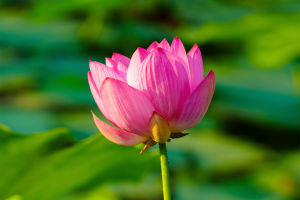Peonies are more than just beautiful flowers—they are a symbol of cultural heritage, elegance, and timeless beauty. Whether we encounter them in ancient Chinese art, traditional headwear, or even modern gardens, the appeal of peonies is undeniable.
In this article, we will explore the fascinating world of peonies, including their origins, cultivation, and cultural significance. We’ll uncover why these flowers have captured hearts for centuries and remain a symbol of grace and prosperity in many cultures.
Origins and Classification of Peonies
Peonies, scientifically known as Paeonia × suffruticosa, are a deciduous shrub that belongs to the Paeoniaceae family. They are believed to have originated in China, where they have been cultivated for over a thousand years. These hybrid plants are typically 1 to 1.5 meters tall, and they feature large, multi-layered flowers that bloom in late spring or early summer. The petals come in various colors such as white, red, and purple, creating a stunning visual display.
Peonies are classified as bushy shrubs, and they are known for their distinct, compound leaves which often have three to five lobes. They are a favorite in gardens, both in China and abroad, due to their vibrant, long-lasting blooms and their association with wealth and beauty.
Cultural Significance: A Symbol of Prosperity and Elegance
Throughout Chinese history, the peony has been highly regarded for its symbolic meanings. Known as the "king of flowers," the peony is often associated with wealth, and high social status. In ancient China, these flowers were cultivated by emperors and aristocrats, and their presence in art and culture reflected the power and prestige of the elite.
In traditional Chinese art, peonies are often featured in delicate silk paintings, intricate porcelain designs, and even in the headwear of women during the Tang and Qing dynasties. The peony's association with prosperity and beauty has made it a popular motif in Chinese culture, where it continues to be admired for its elegance and grace.
Peonies in Modern Gardens and Landscape Design
In modern gardening and landscape design, peonies are celebrated for their spectacular blooms and their ability to thrive in a variety of climates. They are particularly popular in temperate regions, where they can be planted in well-drained soil and enjoy plenty of sunlight. The peony’s large, fragrant flowers make it a centerpiece in many gardens, adding a touch of grandeur to any outdoor space.
One of the most common types of peonies in modern gardens is the herbaceous peony, which dies back to the ground every winter and regrows in spring. Another type, the tree peony, has bushy stems and can live for decades, producing even larger flowers. Both types require minimal maintenance, making them an excellent choice for gardeners seeking a low-maintenance yet beautiful addition to their landscape.
Growing Peonies: Tips and Tricks
Growing peonies can be an incredibly rewarding experience, but it requires some careful planning and attention. To ensure healthy plants and vibrant blooms, here are a few tips:
1. Planting Location: Peonies thrive in full sunlight, so it's important to choose a spot in the garden that receives at least six hours of direct sunlight daily. They also prefer well-drained soil, so avoid planting them in areas where water tends to collect.
2. Soil Preparation: Before planting, amend the soil with organic matter, such as compost, to improve drainage and provide essential nutrients. Peonies prefer slightly acidic to neutral soil.
3. Spacing: Peonies need plenty of room to grow, so make sure to space them at least 90 cm apart. This allows the plants to spread out and receive enough air circulation, which helps prevent diseases.
4. Watering and Mulching: While peonies are relatively drought-tolerant once established, they still need consistent watering, especially during dry spells. Mulching around the base of the plant can help retain moisture and prevent weeds from competing with the peony for nutrients.
5. Pruning: After the peony flowers have faded, it’s important to trim back the spent blooms to encourage future growth. In late fall, cut back the plant to the ground to prepare for the winter months.
A Timeless Beauty
Peonies are much more than just a flower—they are a symbol of beauty, culture, and the passage of time. From their origins in ancient China to their modern-day popularity in gardens around the world, these stunning blooms continue to captivate and inspire. Whether we admire their graceful petals, their cultural significance, or their versatility in the garden, peonies remain a timeless symbol of elegance and prosperity. We hope you find joy and inspiration in growing your own peonies, as they are sure to add a touch of magic to your garden.


